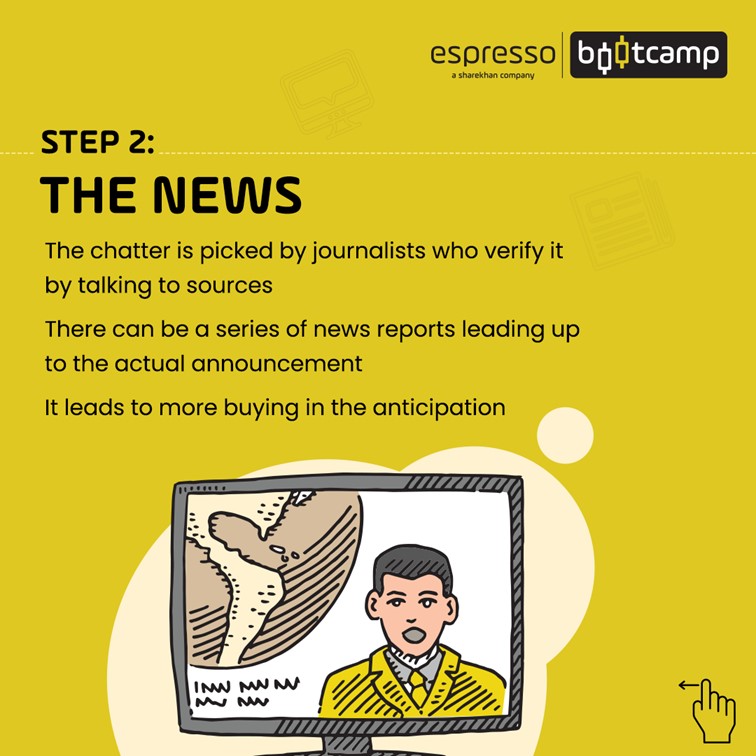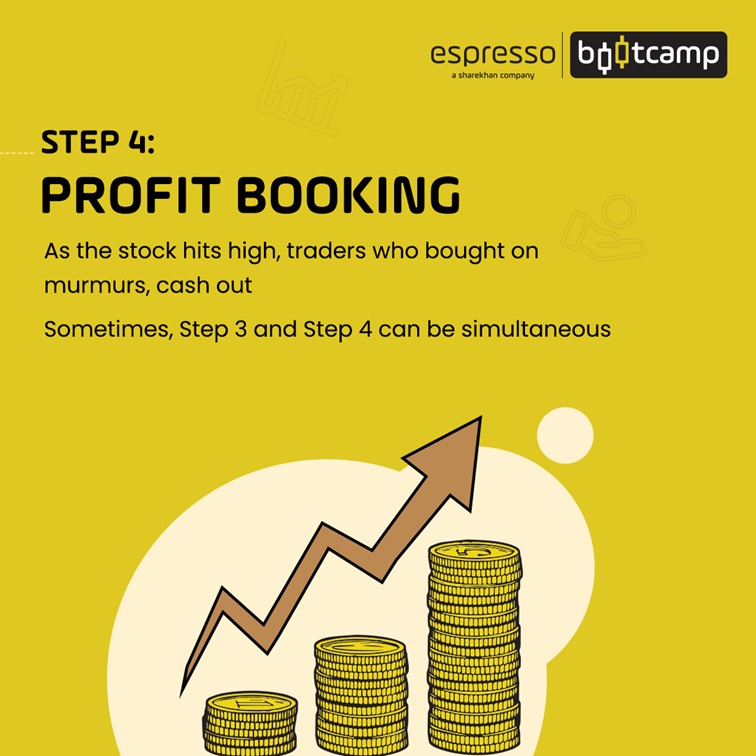Trading based on price action and volatility due to news or event is known as news and event-based trading. The news or events can be either scheduled or sudden. Scheduled news is already planned and can help with news-based trading. But there can also be trading opportunities in case of sudden or unscheduled news. Similarly, one can trade on a scheduled event with reasonable expectations, but it is difficult to trade on unscheduled news or events as they are subject to interpretations. But in any case, it is important to have a good understanding of how to trade the news and have defined news-based trading strategies in place.
News and events can be global or domestic. Global news can impact markets across the world. For example, the Subprime Mortgage Crisis of 2008 dealt a blow to the markets across the world. Domestic news events such as election results can have a localised impact.





Broad classification of news or events
Corporate:
Corporate news or events are company-specific. It can be the launch of a product, mergers and acquisitions, demergers, earnings, etc. Events such as quarterly earnings are scheduled as the exchanges have to be intimated about the same. The outcome of quarterly earnings can be fairly estimated and trades can be planned accordingly. However, there are some unscheduled corporate events or announcements that can pose challenges in estimating the impact on the stock price. But then again this can open up some opportunities for news-based intraday trading.
Data-driven:
These are scheduled events such as the Reserve Bank of India’s (RBI) bi-monthly policy review, the release of data like inflation, quarterly macro indicators such as growth in the Gross Domestic Product (GDP), employment data, etc. These data points allow room for trades to be planned accordingly. However, at times macro indicators may surprise the markets. One has to be careful about expecting the unexpected. For instance, particularly during reports like Crude Oil and Natural Gas Inventory published in the US, around those times, extreme volatility can be found in these markets and prices of these energy commodities. Many websites provide an economic calendar that contains the dates on which various economic data releases are expected.
Policies:
Macroeconomic news, such as changes in policies, new policy initiatives, or changes in taxation industrial policies, generally impacts everyone in the country. They can also be restricted to particular industries.
For example, an announcement in the Budget on capital gains tax on long-term investments can influence stock prices. Similarly, a government decision on policies such as scrapping vehicles over 20 years can influence the automobile industry. The demand for new vehicles will increase and help the automobile sector.
Geopolitical:
Geopolitical events can have a huge influence on markets worldwide. They are a wide range of global events that can include war, conflicts, climate change, migration and major political events like Brexit.
Black swan events:
They are unpredictable, negative and rare events with severe consequences. Many consider COVID-19 to be a black swan event, though that view has been challenged by Nassim Nicholas Taleb, the statistician who introduced the concept of a Black Swan. Trading during times of Black Swans can be truly challenging.
News and events-based trading
- Trading on news or events requires experience and an ability to discern their impact on stocks
- One must be able to interpret the news correctly to be able to benefit from it
- Most importantly, one needs to consider if the news has been factored into the price already or if there is more room for the price to move
There are many ways to trade the news but let us stick to two broad methods:
Directional trade:
In this trade, the price moves up based on positive expectations from the news. As the news comes in, the price continues to go up, and when the news is confirmed, this trend is confirmed too. It is vice-versa for negative news.
Reversal trade:
In this trade, the stock price is on the up from the expectation of positive news. However, as the news comes, the price fails to continue with the momentum. It either remains in a particular range or begins to move down sharply. One can book their long trade here and go short. It is vice-versa for a piece of negative news.
One of the key points in news trading is having your stop losses in place. A piece of news always triggers volatility resulting in sharp price movements. If one does not keep a stop loss, one is bound to suffer losses.
Pros and Cons
Pros: A trade can be planned if it is a regular data-driven or a planned corporate event. The trade can be planned right from entry, exit and stop loss. Multiple trade opportunities are possible in a single day.
Cons: News-based trading poses certain risks as well. It is risky to carry overnight positions as the news may be fake or may not be substantiated. As volatility begins to build in with the news flow, the Bid/Ask spread can largely result in a high impact cost. The trader has to be skilled and nimble-minded to exit a trade as soon as it goes south.
Points to remember:
- News-based trading should be backed by proper interpretation of news and robust strategies.
- Sound fundamental knowledge is a must.
- It is tough to judge when a piece of news will have a far-reaching impact. A black swan event is one such event.
- News-based trades without a stop loss are highly risky.
 0
|
0
|
 0
0
 Modules
Modules

 Watch
Watch 
